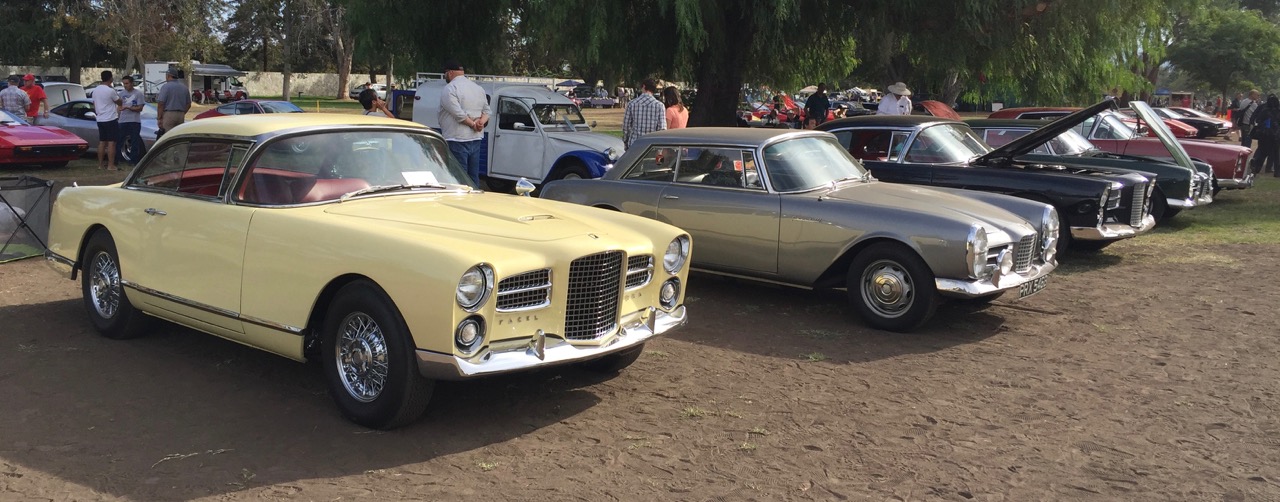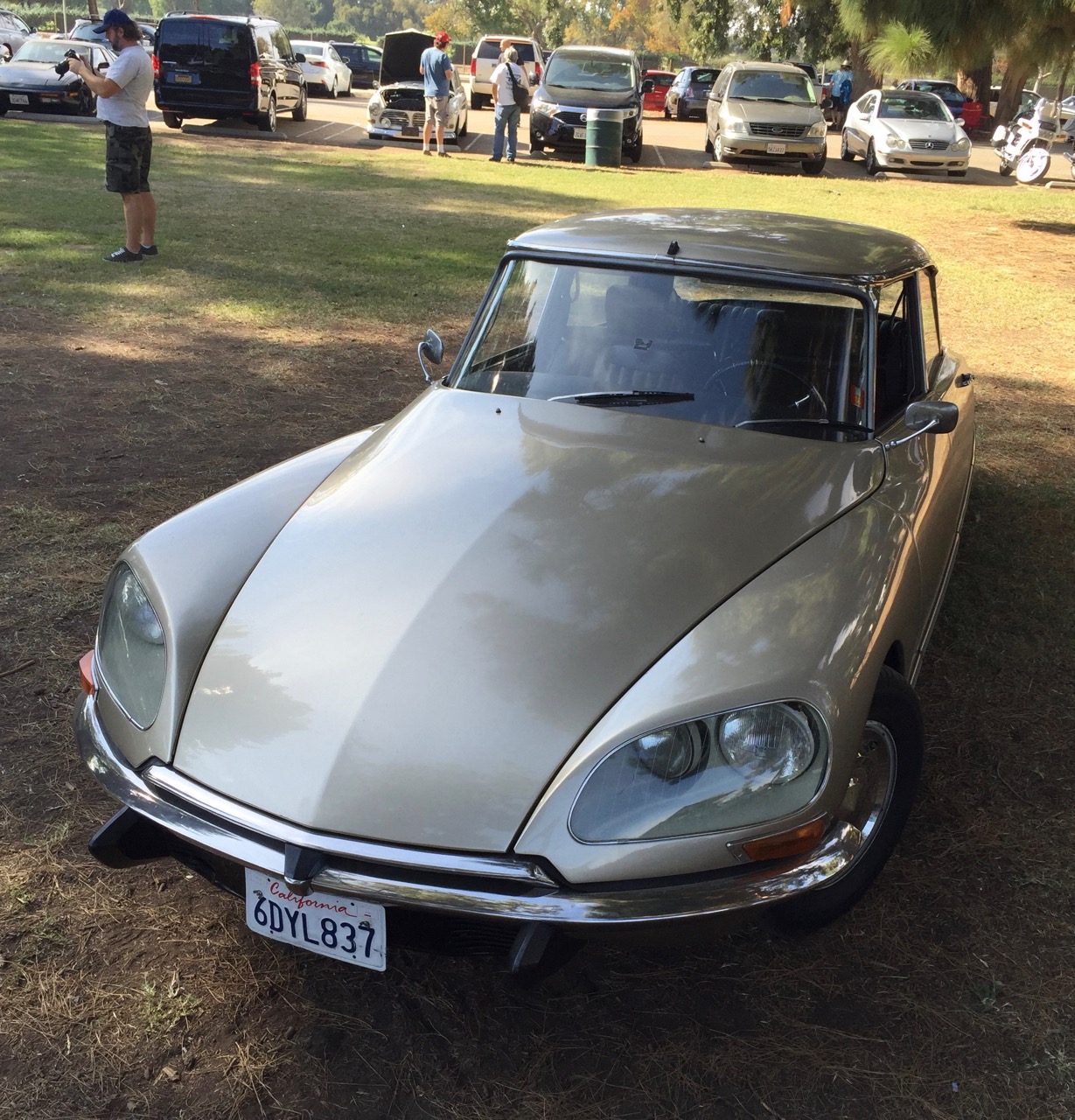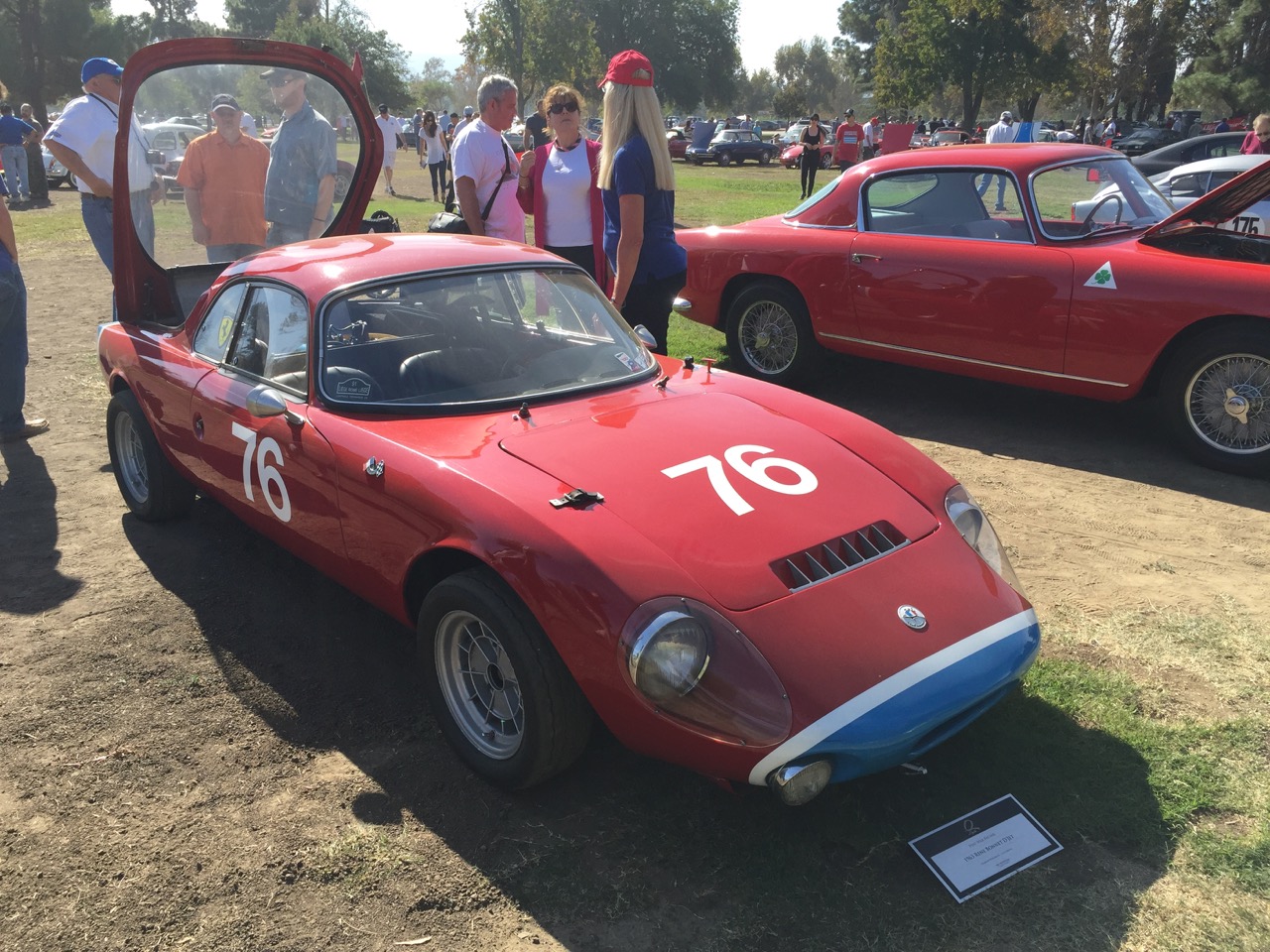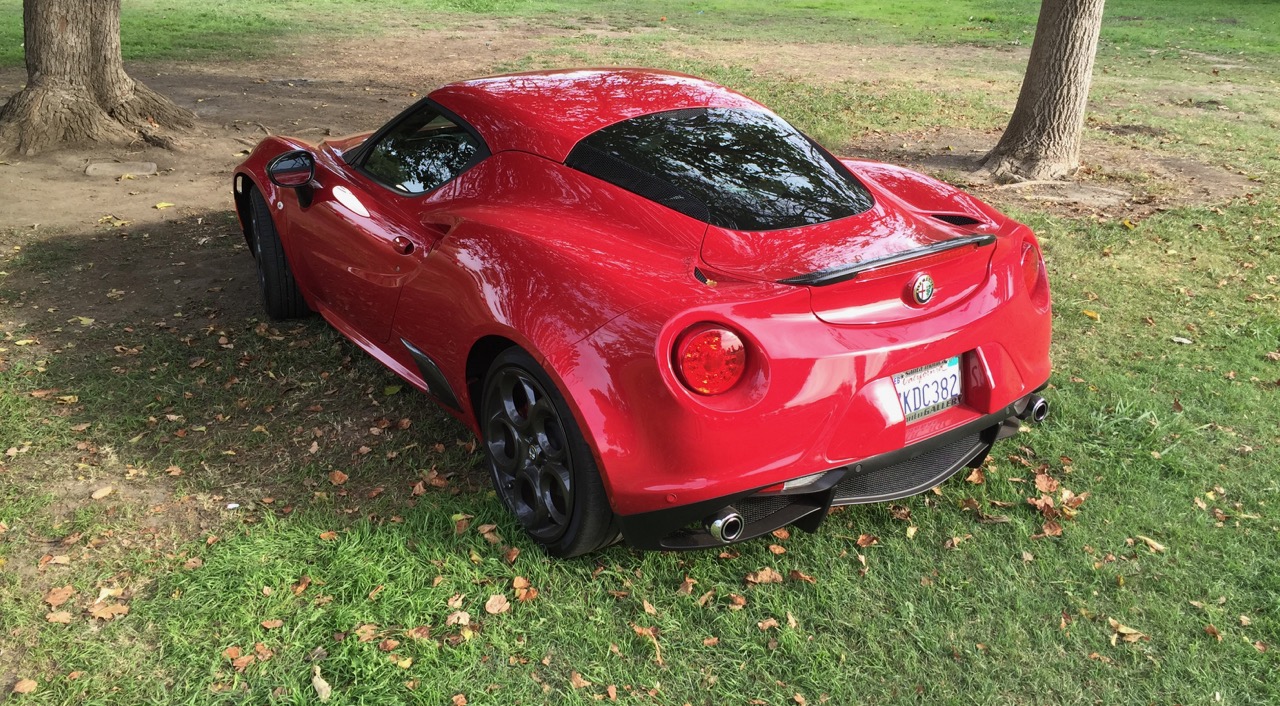
‘Best of France and Italy” is not a concours d’elegance. It is a chance for Los Angeles area owners and fans of a specific, under-served, group of enthusiast cars to assemble and share stories, to find help — and rare pieces — as well as buyers and sellers.
But this was not a great year for the event. The drought had eliminated much of the beautiful lawn that traditionally carpets the show field and the ambient temperature hovered around 100 degrees. Dust was the enemy. Real concours-prepared cars have been a small proportion of the field at this annual gathering and dusty conditions this year seemed to have discouraged those owners. But, still, the opportunity to see and discuss cars you have rarely if ever seen and chat with folks who are devoted to their history and arcane sciences was worth the visit — the event is free after all.
The French cars are rarely seen outside this little-known assembly, but car folks who read are there. And Tina Van Curen and Chuck Forward, who own Autobooks-Aerobooks in Burbank, California, are responsible for both supplying the volumes and organizing this event — and a number of others.

A handsome René Bonnet Djet, veteran of the San Francisco area CSRG, with a 1700cc Renault engine in its tail, was a treat to explore. Bonnet and his original partner, Deutsch, began to build D.B. racing cars from the Citroen Traction Avant drive system in 1937, moved to the Panhard 850cc opposed twin for class competition after WWII and finally, after dissolving the founding partnership, Bonnet collaborated with Renault for power and used his own name for the last versions of his dream car — soon to become Matra.
Alpine is a name dear to the hearts of followers of the Le Mans 24-hour contests through the second half of the last century. They were handsome competitors in both road racing and rally adventures, with many victories in both — against all odds and all comers. An Alpine A110, everyone’s favorite, powered by the 1300cc version of Renault’s historically robust racing engine, was tucked in next to a Tatra and maintained a group of admirers.
When legendary iconoclast genius Gabriel Voisin was at the end of his automobile production, he contacted his friends at Citroën to suggest André Lefèbvre, his young engineer, would make a very important asset to its innovative team. The results of that successful “transfer-of-talent” was the legendary star of dozens (maybe hundreds) of French cinemas, the 7CV, 11CV, and 15CV Tractions Avant, followed by the impossibly simple and effective 2CV and finally the space-age DS and ID series of French icons, many of which were present. There were even a few of the later and even more exotic CX series on the field — not to mention a couple of the incongruous dna of the French-Italian Citroen Maserati.

As arcane marques go, there are few more fascinating than the luxurious Facel-Vega. The Facel-Vega Club came out in force, exhibiting the range from the Volvo-powered Facellia II to the mighty Chrysler-powered HK500 and Excellence limousine — front and rear doors are hinged fore and aft respectively with pin-locks at their bottom corners where they meet — without a central post (!).
The Peugeot group included a beautifully restored 405 Mi16 and a seriously unrestored 505 LeMons Special. It is a special exhibition, after all.
Los Angeles is well known as a bastion of Latin car aficionados with a devoted cadre of French car fans, but the Italian contingent is vast and zealous to its core.
There were a few standard bodied Abarth-badged Fiats, but it is always surprising to see the elegant little 750 GT Zagato “Double-Bubble” with California-size men and women standing next to it.
One must remember Carlo Abarth’s engineer-tester, Klaus Steinmetz, was over 6 feet tall and fit comfortably in the full range of Abarth coupes. In fact, the U.S. importer was Franklin D. Roosevelt Jr. and he was well over 6 feet and could not only fit inside his stable of tiny terrors, but could enter and exit the over-size doors without undue stress.
The devotion of the American Lancia Club to its cars full of singular design innovation and elegantly complex execution showed in force. There was even an example of the first Lancia science project, the incomparable Lambda, introduced at Paris in 1922.
Often described as the first unibody automobile, its structure was more like a space frame designed as a single stamping. Included in the design was both independent front suspension with sliding pillars and a robust narrow-angle V4 engine; a package of brilliant concepts that have made it — and by extension — Lancia a celebrated engineering marque. In the group on the field were narrow V4-powered Appias, including a Zagato coupe, a much-admired V4 Fulvia Zagato. There was one of the fantastic Aurelia V6s with transaxle, independent rear suspension and inboard rear brakes, this one a B24 cabriolet.
There are Alfa-Romeos galore and a few rare examples (nothing prewar this year). It was fun to visit with a couple of real enthusiasts about their 2600 Touring-bodied roadsters — one with a correct set of the rare-option Borrani wire wheels. It is an elegant addition and the ones on his car were polished.

Dan Sabah had been in search of a good Giulia Spider and missed his chance with a telephone bid, went back to research and discovered the 2600 roadster. He redirected his search and bought one of those from an owner in Boston, sight-unseen. He has been happy with his choice for the past 12 years — it had its challenges. Now everything works (omg!), it still bears the beautiful red paint it arrived with and the only alteration has been the wheels. It is a handsome rarity in the world of Alfas.
The recent discovery (read: values) of Alfas as collectable treasures is a startling revelation. In the row of “nice” Alfa Spiders was a recently restored black Giulia with an asking price of $80,000. Wow! Who knew? Suddenly the price of a new 4C seems less silly than it did a week ago.
One young guy with whom we discussed the Spider said he could not find a good Spider so just bought a new 4C. He is very happy with a modern car filled with new science. Did the new car affect the price of the old one — or the new collectability cushion the price of the new one?
There was a well–represented group of “Enzo-era” Ferraris and “Ferrucio-era” Lamborghinis that everyone already recognizes.

As mentioned earlier, true to the fluid character of the event, we located a beautiful and historic 1947 Czechoslovakian Tatra T87 with the famous air-cooled V8 in its tail. A placard described how 30,000 kilometers have been accomplished since restoration and that included a “Three Oceans Tour,” twice between the Atlantic and the Pacific and a courageous assault on the gravel Dempster Highway to the Arctic Ocean.
Mark your calendars for November 5, 1017. There is still time to discover a destitute “simple car” to restore before that date and qualify for a life membership in the “Arcane Car Society.”
Photos by Larry Crane





































